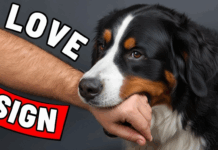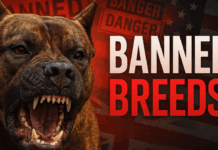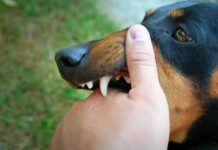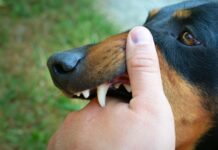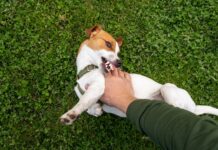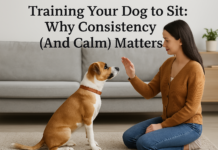Last Updated on October 29, 2021 by Dogs Vets
How To Litter Box Train A Dog – 6 Steps
It is incredible to live with a dog, which is why you want to enjoy this experience as much as possible. Dog training is a very useful skill when you are a pet parent.
With useful tricks, consistency, and lots of patience, you can finally teach your dog the basic ground rules of living in the house.
The most challenging part of housetraining your furry friend is teaching them how to use the litter box. Getting your dog used to litter box training from an early age is a good idea, as they will quickly get used to it.
Even so, if your dog is an adult, it isn’t too late since you can train them using proper techniques and hard work.
Why is Litter Box Training Important?
Before we learn how to litter box train your dog, let’s examine why litter box training is essential for dogs. The following points highlight the importance of litter box training:
- Using this method is convenient for both you and your dog.
- Having a litter box is a beneficial option for the health and wellness of you and your dog.
- If you live in an urban area, litter box training is a safe alternative – there aren’t many yards to clean up after your dog.
- It saves time, energy, and money.
- You can avoid any unexpected accidents inside your house by keeping a litter box.
- It is a sanitary way to have a pet around the house. Your pup will be able to use the litter box more easily if it is in a low-traffic area.
6 Steps of Dog Litter Box Training for Dogs
With the rise in popularity of pets at home comes the challenge of training them. We should be extra careful with our furry friends when it comes to litter box training. Here’s a guide on how to litter box train your dog, step by step.

Prepare A Litter Box
The first big step towards litter training is to make proper arrangements for the litter box. Choose a big container or tub that can hold the dog litter.
The box should be big enough that your dog can move inside it freely. There are several self-cleaning stations available in the market that you can also purchase.
Once you have secured a litter box, you have to place it somewhere where dogs can poop and pee without any disturbance, just like there are direct ways to dog-proof the cat litter box that your cat won’t be disturbed.
You can put the litter box at a secure location and close the door. DON’T place the box nearby to the bowl or other area where they usually eat their food.
Introducing Your Dog To The Litter Box
Once your dog is showing signs that he wants to go potty, introduce the litter box. At first, they might try to avoid the box or want to head outside.
Encourage them to use the litter box by giving commands such as “Use The Box,” and when appreciate them if they do so. Even if mistakes happen outside the box initially, then also it’s okay.
Supervision Is Important
Keep out an eye for your dog and its behavior inside the litter box. If they are not feeling very comfortable inside the box, then you should try changing the litter or box.
As the litter box is new territory for them, allow them to get adjusted to the surroundings. While supervising, don’t get too close as that too might make them feel conscious.
While maintaining your distance, encourage them as much as possible. Once they are done, do check that they are pooping properly or not.
If your pup is stepping out of the box and pooping outside, then scoop up the poop and place it inside the box to let them know that it is a safe place.
Expect Accidents
While giving the litter box training to your dog, expect the chances of accidents happening. If you find your dog poop outside the box or on the carpet, then don’t shout at your dog as this might scare them. Clean the area first, and redirect your pup to the litter box to complete their business.
Stick To A Routine
Dogs are known for maintaining a routine. Haven’t you noticed how they come to you asking for food at the same time every single day? Hence, the first step to dog litter box training is to follow a routine.
Give them all the meals at fixed time intervals, take them out frequently, allow them to take necessary sleep, and most importantly, train them to poop during fixed periods. Although the last one is a bit dicey, you can try your best to do so.
Reward Your Dog
When your dog successfully pees or poops inside the box, reward them for encouraging this behavior. Rewarding them will motivate them to use the litter box more frequently, and in a matter of time, using the box will become part of their life.
Closing Remarks
Once your dog goes to the potty area, i.e., the litter box on his own, the training is completed. The key to training your dog is patience and understanding their problems as well. It is very crucial that you get branded litter and clean the litter box frequently.
Maintaining a training schedule is also essential to train your dog in the least amount of time. All in all, once you have successfully trained your four-legged friend about how to poop and pee inside the litter box, both of your life will be much more convenient.
Conclusion…
We hope you enjoyed this article… What are your thoughts on How To Litter Box Train A Dog – 6 Steps?
Please feel free to share with us in the comments section below.
Fact Check
We strive to provide the latest valuable information for pet lovers with accuracy and fairness. If you would like to add to this post or advertise with us, don’t hesitate to reach us. If you see something that doesn’t look right, contact us!


